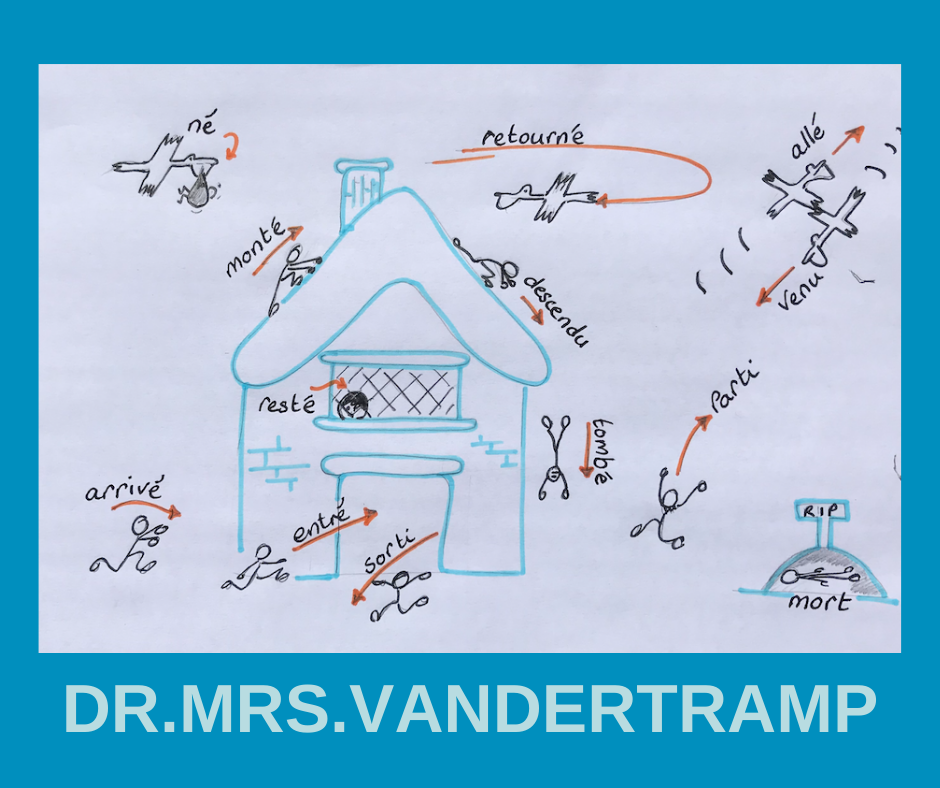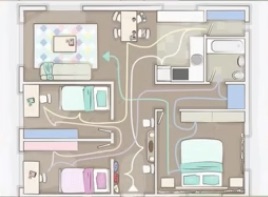Memory Magic
Apr 20, 2020Our memory is tough to work out at times. So in this blog post I'm going to highlight four major memory techniques that will help you remember French words, phrases and even grammar structures. It’s pretty thorough so you might want to have a pen ready!
We do tend to forget things and it makes us feel bad. We want to be able to speak French fluently, requiring an active process, but we often use passive strategies to help us learn. It’s a bit like putting the words on paper at the back of a huge drawer and expecting that they will pop out just when we want them in conversation.
But they don’t always! So what can we do about it and how can the fact that we forget something actually be part of remembering it?
Three simple stages to remembering:
1. We create a memory
Our brain sends signals in a unique pattern to create a memory. At this stage we are using our short term memory because our brain won’t know if it’s worth putting in the energy to make it stick or not.
2. Repeat to strengthen connections
We then need to strengthen the connections we made in our brain so that the memory sticks. It needs repeating so it gets stronger and it sticks in our long term memory. It’s interesting that when we sleep, our brain is following the neural connections made during the day and the more of them we consolidate, the stronger the connection we make.
3. Retrieval and recall

This is the point of recall. This is where we all want to get to with the least effort. The point of learning is to be able to retrieve information on demand. But when we have to make an effort to recall our memories, we feel we have forgotten them. In fact, they’re not forgotten. They're just buried by all the information that piled in afterwards. Forgetting is a trigger to make the effort to bring it right back to the front of your mind again. This is a good thing not a bad one. You are supporting your learning by trying to retrieve it.
Now you know the stages we need to go through to remember, let’s look at four proven strategies that can help you increase your French vocabulary, phrases or grammar.
Four proven strategies that help to increase French vocabulary, phrases and grammar
1. Spaced repetition technique
Try an adapted spaced repetition technique, where you test yourself on a new word after an hour, then again after a day, then again after two days, five days and so on. Make the intervals further and further apart. Let this be your regular learning routine. If you can’t retrieve it then just bring the word back up into the more regular testing routine.. Then move straight onto the next technique. Move on when you feel you know the word.
2. Make it realistic and repetitive
Personally, spaced repetition can work for me but to make sure I really never forget a phrase, I have to repeatedly apply it in a real situation. Often, one technique alone is just not enough. Understanding how a word or phrase is applied by applying it in your daily life and this will help seat it into your long term memory far more easily. This makes your learning not only more realistic, but also more random - it makes you repeat words and phrases outside of the learning order. And this works because real life is not in the same order in which you learn!
Take rote learning a verb form, for example: How many times do people have to count from 1 - 9 just to get to number 10? Randomising your learning in real life means your recall will also be stronger, and you won't have to stop your conversation while you recite your pre-learnt routine!
How do I make learning a word more realistic and repetitive?
Start with a noun. It can be any object you want to learn in French.
Label it on paper.
Attach this paper to the object you want to learn.
It’s also really important to rely on your forgetfulness. If you test yourself too early, chances are that you are keeping the information in your short term memory. As soon as you forget something, you can’t remember the word you want. That is the key trigger in telling you that it’s time to look at it again, apply it and to bring it back to the front of your mind.

The more you forget, the more you are building the long term memory.
Remember this. If you post your word on an object, make it so that you can fold the paper that the word is on so that you can test yourself. It’s no good seeing the word and thinking you just remembered it.
We also stop taking notice, too, so move the paper with the word on it around to keep you paying attention.
And once you think you have the word, don’t stop there!
3. Add an action to it
So If you’re learning words in the bathroom, for example, you have the ideal opportunity now to add what you do there:
Take the sink, for example.
L’évier (L’évier): Je me brosse les dents à l’évier et je me lave les mains.

Then, once you start increasing your grammar you can change the tense. You can use the past. For example:
Å l’évier Je me suis brossé les dents et je me suis lavé les mains.
So what starts as a simple word that you can learn by spacing out the times you see it, the process never has an end to it. It gets as real as you want it to.
To make sure you remember it, cover up the word and say what you want anyway. If you can say the sentence after a couple of weeks without referring to the paper, then it’s already going into your long term memory.
If not, then that’s a simple reminder to just keep at it a little longer, that’s all.
2. Use mnemonics
This is a great way of remembering and it can be great fun. Once you’ve cracked the technique you can learn anything. Combine it with other methods of learning and you’ll soon have faster recall and be able to have the conversations you want in French.
Mnemonics is an information storage technique. You can use it for learning simple words or for a whole speech if you want.
Here’s how:
Take something you want to learn and write it out in full. For example, the verbs that take être in the past tense. That one always causes people to cringe as they constantly forget which verbs take être.
Take the first letter of each word and rearrange them into a new word or a more memorable order.

Using this one as a word is a worldwide success, for example as you just have to remember the one big word to trigger all the individual verbs.
If you want to get clever, you can then make up something you can say to trigger the letters, like “Do Remember The 16 être Verbs in the Past are Dr.Mrs.Vandertramp” as this already uses some of the letters you need for the full 16 verbs.
3. Visualisation
We don’t all learn by thinking things through. Sometimes we just need to see it.
We like pictures or visual connections to stimulate ideas. The same information is successfully used worldwide in the form of a picture mainly using opposites to learn. And we look at the picture in our mind to remember the verbs.

Many learn the order of the colours of the rainbow by using this technique. How do we know it’s ROYGBIV? In Britain we recite "Richard Of York Gave Battle In Vain". It’s a simple mnemonic coupled with a visualisation.

4. Memory Palace
This is an imaginary place to store information. Make an imaginary journey using specific locations to trigger your memory. Do this in a logical order and repeat it. It’s like when you hear the same music playlist often enough you get to know what’s next before the end of a song you’re hearing, and your brain takes in the sequencing for you.
To make a Memory Palace you:
- Choose a place where you will make a route.

- It can be in one room as your eyes can track where to go, or over a wider space if you wish. My favourite place is the staircase so I can either look or climb the stairs as I memorise. Moving around helps me learn more. Then later I visualise myself moving into each position.

- Plan what you want to learn and put the word in that specific place. The more significant the place, the better.
- Learn a few words at a time by making a mental image at each place of what you want to learn.
- Start at the beginning each time to keep the sequence. Don’t go too fast. Breathe in and out deeply after each one.
All these techniques work well either for a small amount of words, or to trigger much larger ideas, especially ones in sequence. I used them together to learn my French in the early days as well as whole documents I wrote for my masters degree.
Add a few bonus fun facts and you’re well away! Such as did you know that drinking caffeine AFTER you study can help more than drinking it before?
And meditating clears your mind of incoming clutter. Another great focus bonus!
Of course, we all know that we need to stay hydrated, eat healthy and exercise. Think of them all as bringing oxygen to youR brain . . .
So here’s a quick RECAP
 Four techniques to use to help you learn information.
Four techniques to use to help you learn information.
1. SPACED REPETITION TECHNIQUE
2. MNEMONICS
3. VISUALISATION
4. MEMORY PALACE
Since emotions make for good remembering, try to add some humour or something to trigger happy thoughts to help you remember. Telling a really happy story on your "memory palace" can make much more impact than referring to usual things.
And exaggerate! It really helps. The stranger it is, the more memorable it will be!
The final action is to be able to recall at will - in spontaneous conversation. Once it comes to you in conversation, even if with a little effort, you know you’re learning well.
Try it now and then comment on how it worked for you or anything you added when you did it.
"Like" this post and share the link to your friends.
Be sure to subscribe to my channel on youtube so you don’t miss future videos about how you can finally Speak REAL French.

Free Masterclass
Learn my 4 step method of how to hold meaningful french conversations the R.E.A.L. way in just 30 minutes a day.
When you signup, we'll be sending you weekly emails with additional free content

